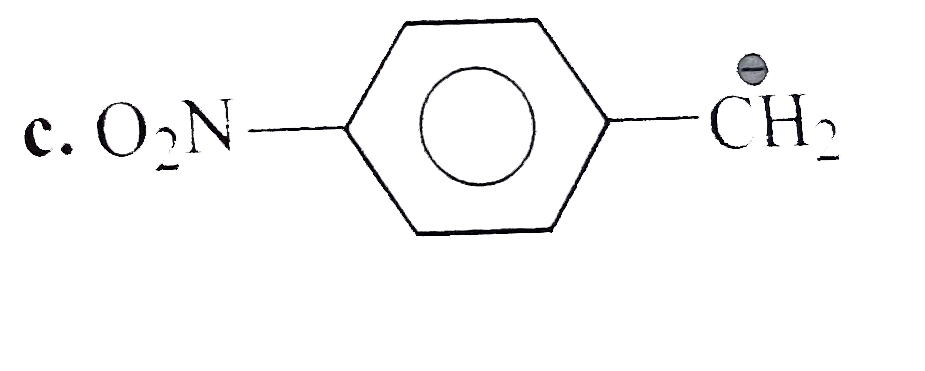Hybridisation Of Reactive Intermediate
Step by step video & image solution for Hybridisation Of Reactive Intermediate by Chemistry experts to help you in doubts & scoring excellent marks in Class 11 exams.
Updated on:21/07/2023Similar Questions
Hybridisation in Reactive Intermediates- Carbenes, Benzynes, Allenes || Hybridisation in Odd Electron Species || Drago’s Rule and Application
View Solution"Hybridisation in Reactive Intermediates- Carbenes,Benzynes,Allenes, Hybridisation in odd Electron Species,Drago’s Rule and Application"
View Solution
Knowledge Check
An organic reaction occurs by using reagents called electrophiles and nucleophiles via the formation of some reactive intermediates called carbocations, carbanions, free radicals, carbenes, nitrenes, radical cations, and radical anions.
The most stable free radical is :APhCH2.CH2BMe.CH2CMe2.CHDPh.CHMeAn organic reaction occurs by using reagents called electrophiles and nucleophiles via the formation of some reactive intermediates called carbocations, carbanions, free radicals, carbenes, nitrenes, radical cations, and radical anions.
The most stable carbocation is :APh⊕CH2B C
C D
D
An organic reaction occurs by using reagents called electrophiles and nucleophiles via the formation of some reactive intermediates called carbocations, carbanions, free radicals, carbenes, nitrenes, radical cations, and radical anions.
The most stable carbanion is :APhCH_2 overset (Ө) CH_2BPhӨCH2C D
D
Hybridisation in Reaction Intermediate ( Carbocation, Carbanion, Carbene, Benzyne) || Allenes || Odd Electron Species || Dimerisation || Ion-Pair in Solid\ Liquid Phase || Calculation OF pπ-pπ and pπ -dπ Bond
View SolutionHybridisation in reaction intermediate || Hybridisation in odd electron species
View SolutionUsing the curved-arrow notation, show the formation of reactive intermediates when the following convalent bonds undergo heterolytic cleavage :
(a) CH3−S−CH3
(b) CH3−CN
( c) CH3−Cu .
View SolutionUsing curved arrows rotation,show the formation of reactive intermediates when the following covalent bonds undergo heterolytic fission.
(a) CH3−CN
(b) CH3−Cu
View SolutionUsing the curved-arrow notation, show the formation of reactive intermediates when the following convalent bonds undergo heterolytic cleavage :
(a) CH3−S−CH3
(b) CH3−CN
( c) CH3−Cu .
View Solution
